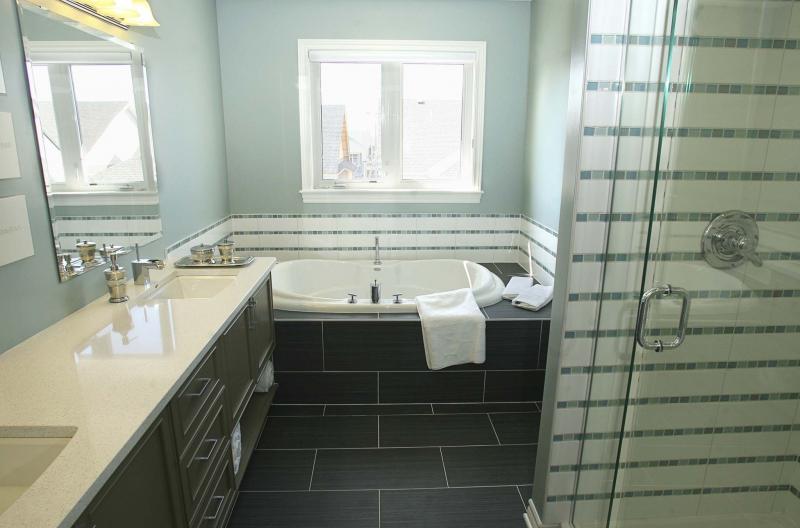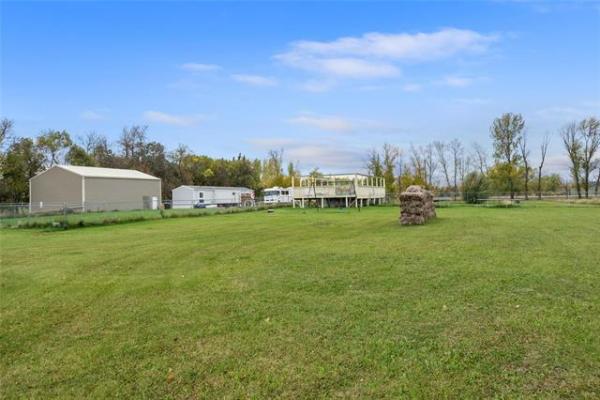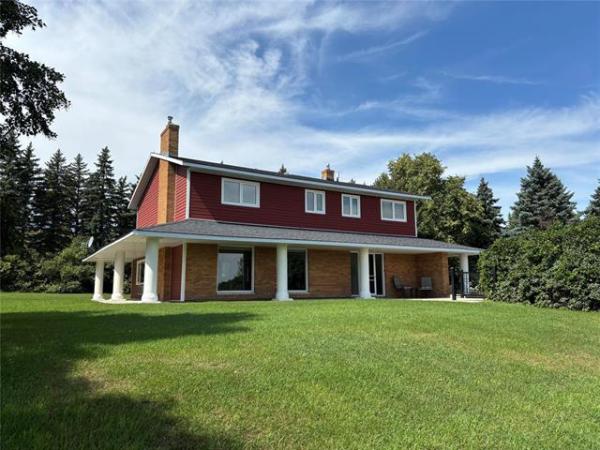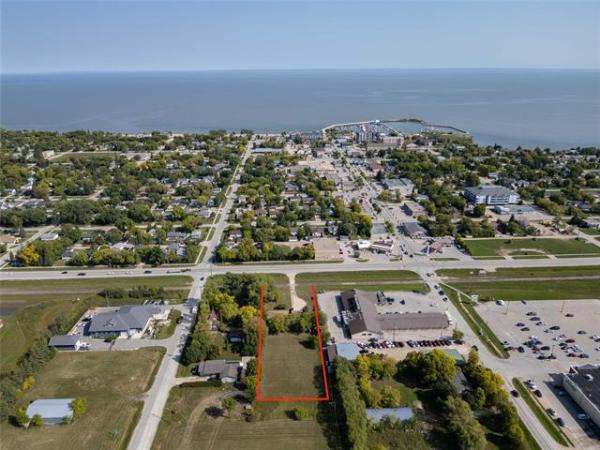Question: We met a few years ago when I fortunately called upon you to inspect an old apartment block. This block was being transformed into condo units. At the time we were looking to purchase a unit for our daughter. Calling you was the best thing we ever did. We still think about that close call and remain grateful for your professional inspection resulting in our decision to walk away.
Today, I’m requesting your advice about selecting the best tub surround material for our seasonal cottage. An awesome husband and wife team, who are neighbours, do odd jobs and are willing to install a wall shower unit over the existing bathtub. The bathroom is quite small with a good size window which I’d like to keep. I like the light and fresh air. The walls are drywall. I’m not sure, but the cabin may be around 35 years old. Initially I figured an acrylic tub surround would work. I now realize getting a one piece surround down a hallway and into a small bathroom wouldn’t work. Plus, I have heard conflicting views on whether acrylic would or would not crack in an unheated cabin. And, I gather that acrylic panels leak, so it doesn’t sound like a good option. So, we did a bit of research on using cedar or pine as a tub surround. Again, there seem to be pros and cons.
Would you please give me your opinion on a cedar or pine tub surround and tips on preparing the drywall to prevent rot, leakage, improve adhesion etc. Also, I’m totally open to your suggestions for other options and tub surround materials. I’d appreciate your opinion on any aspect of this project. Looking forward to hearing from you and many thanks for your advice, Doreen Penneys.
Answer: There are numerous choices for materials or products to use around a tub or shower to protect the walls from moisture damage and provide an easy to clean surface. Choosing the appropriate one for you cottage may largely be a matter of personal taste and budget, but I will suggest some options and answer your questions about the suitability of using wood panelling for this purpose.
The key to choosing the proper materials for the area above and around a tub or shower area is to ensure they are completely moisture resistant and easy to maintain. For centuries, ceramic or masonry products have been used with great success, but there are some drawbacks. Ceramic tiles may be a reasonably priced way to achieve your goal, but they do require more maintenance than some other materials. One benefit is they can be cut to fit almost any configuration, which may be necessary in your older building. Unfortunately, the grout in the joints between and around the durable tiles do need regular cleaning, especially with well water. If your water has large amounts of minerals or iron, staining of the grout may be a problem. Regular cleaning or use of mineral-removal products may be required if that is your choice.
Acrylic fibreglass shower units are excellent quality and one of the most easy to maintain products for this purpose. I regularly see these used in even the highest quality homes because they look good for decades if well maintained. They are easy to clean, with non-abrasive cleaners, and only require re-caulking of the seams and around the edges with silicone, occasionally. They may also be subject to a buildup of minerals from the hard well water, but should still look good for years if frequently cleaned. Your concern for leakage is unfounded, as the rigid surface is extremely moisture resistant, and they normally have good gaskets and overlapping surfaces at the joints. Also, they are made in three piece styles, as well as one piece, designed for easy transport and installation in a retro-fit situation such as yours.
Unfortunately, use of an acrylic unit may not be possible if the window you want to retain is over the tub. While other types of materials can be cut to fit most openings, these type are not well suited for that purpose. It may be nearly impossible to cut the side wall section and properly seal it around your window. If the window is in another wall not near the tub, then use of this material may be a good choice.
Other options frequently used in cottages are rigid tileboard sheathing, plastic laminates, or lower quality vinyl tub-surrounds. These are more popular due to the lower cost, easier application, and transportability. While they may not be as long lasting or good looking, they are certainly an acceptable alternative to the acrylic units. Tongue and groove wood paneling is also an acceptable alternative to these, but will require significantly more maintenance. Also, if there is a shower and not just a bathtub, wood panelling should be ruled out as it may be too difficult to keep it clean with constant moisture from the shower. If it is a stand-alone tub, cedar paneling may be a good choice, but I would rule out pine altogether as it is not moisture resistant enough for this purpose, even when it is treated.
The final thing to address is the drywall in the bathroom. While it may be OK in the rest of the bathroom, it will not be a proper choice around a tub or shower no matter what you choose for the surface material. You must budget for a replacement of the wall sheathing around the tub/shower area with specialized materials designed for this purpose. Cement board, moisture resistant gypsum board, or even plywood would be better than standard drywall, which can easily become waterlogged and mouldy. If you do decide to go with cedar panelling, it could be applied directly over the studs and poly sheathing, but a backing of exterior grade plywood would make application much easier. In that situation, I would also recommend treating the cedar with Danish or Swedish oil, or another non-hardening preservative, to prevent excessive water staining.
The choice of what to use around your seasonal cottage tub area will largely depend on what you want it to look like and how much maintenance you want to do, rather than suitability for the climate. Most materials designed for this purpose will be work fine, as long as you have the proper wall sheathing behind it to prevent moisture damage and mould growth.
Ari Marantz is the owner of Trained Eye Home Inspection Ltd. and the past president of the Canadian Association of Home & Property Inspectors — Manitoba (cahpi.mb.ca). Questions can be emailed to the address below. Ari can be reached at 204-291-5358 or check out his website at trainedeye.ca.
trainedeye@iname.com




